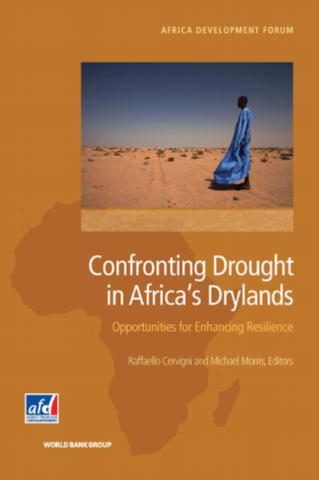Confronting drought in Africa’s drylands : opportunities for enhancing resilience
Confronting drought in Africa’s drylands : opportunities for enhancing resilience

This book focuses on the medium-term prospects (over the next two decades) for increasing the resilience to drought and other shocks of people living in dryland areas of East and West Africa. Increasing resilience will not automatically lead to poverty eradication; for poverty to be eradicated, a number of additional actions will have to be taken, for example, improving health services, strengthening educational systems, and improving access to markets for inputs and outputs. But while increasing resilience is not a sufficient condition for poverty eradication, it is most likely a necessary one, because it is hard to imagine how households that are unable to cope with the impacts of drought and other shocks can save enough to augment their endowment of productive assets and increase their income generation potential. The questions concerning vulnerability and resilience addressed in this book must be understood against the backdrop of an extremely dynamic environment. Dryland regions of Africa are already undergoing sweeping changes that are affecting the livelihoods of millions of households. Because the ongoing transformation of the drylands is being propelled by demographic drivers that have a great deal of momentum, the key question for policy makers is how best to manage the demographic, social, and economic changes that are coming.







